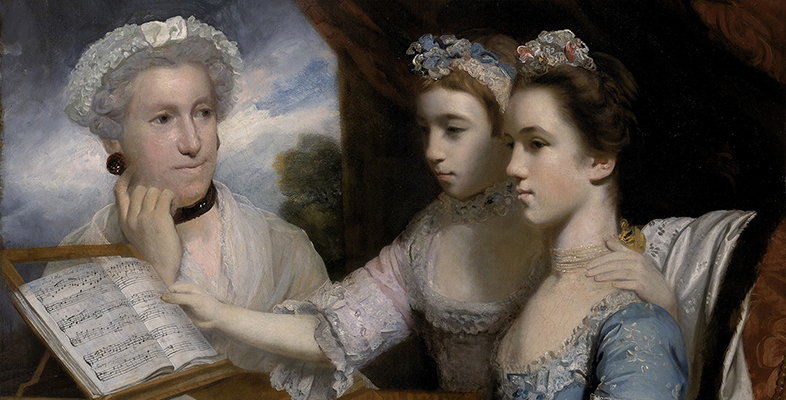2.4 The contents of the Vienna manuscript
You are now going to turn to the second manuscript in this case study to see if its contents can likewise provide insights into its origins and use. The format and appearance of the manuscript make this an ostensibly difficult task, although its simple form indicates that it had a very different purpose from the last manuscript you examined. At first glance it is not entirely clear whether these sheets were performing parts or models for other choirbooks or partbooks created in Alamire’s circle. A closer look at the manuscript gives a better indication of its possible use – the sheets are quite large (almost the size of a small choirbook and larger than the biggest partbook in Alamire’s output), and their music and text are very clear. This would suggest that the manuscript was probably intended for performance (Kellman, 1999, p. 146), but by whom?
Of the songs presented in this manuscript, one is anonymous while a number are by composers of the French court (Johannes Ghiselin, fl.1491–1507, Jean Mouton, before 1459–1522, Jean Richafort, c.1480–c.1550) and the Netherlands court (Agricola and La Rue). One work in particular provides insights into the manuscript’s origins. This is the anonymous chanson Plus outré pretens parvenir, which cites Charles V’s imperial motto ‘Plus oultre’ (‘Even further’), reflecting his wish to surpass himself during his reign. The second verse of the song also quotes the motto of Philip the Fair (‘Qui vouldra’ – ‘He who wills’) as well as a phrase from one of Margaret of Austria’s poems in Brussels Ms. 228 – ‘Pour ung jamais’.
Activity 4
Examine the information presented above about the contents of this manuscript. To what extent can the manuscript’s owner be determined from this information? Can this be easily assigned to an individual patron, like the previous manuscript you studied? Or is this not as clear? Don’t worry if you come up with several possible answers to these questions!
Discussion
From the information presented here, I think it is more difficult to link this manuscript with just one person. Like the Brussels source, this manuscript also presents the prestigious repertory of the French and Netherlands courts, which therefore implies that the manuscript was created for an equally illustrious institution. But, unlike the previous manuscript, this collection does not seem to be dominated by one person – Charles V, his father Philip and his aunt and guardian Margaret are all represented in the chanson Plus outré pretens parvenir. The inclusion of this song does, however, indicate the manuscript’s strong connections with the Habsburg dynasty. Along with Alamire’s role in the creation of the manuscript, the chanson presents the possibility that the Vienna manuscript was also produced for use at the Netherlands court.
Kellman has suggested that the chanson Plus outré pretens parvenir might have been composed, and its music copied, for performance at the Netherlands court soon after the election of Charles as emperor in 1519. He claims that the text of this song reflects Charles’s promise to govern well as emperor: ‘in wisdom I want to help anyone who so desires, in peace and war … I have undertaken to maintain my moderation in all things that may come’ (Kellman, 1999, p. 146). Kellman further proposes that the pages formed part of Alamire’s collection of performing parts, which had been used by the chapel of Charles V or Margaret of Austria and for which Alamire no longer had a use – the folios were therefore sent by the scribe to the Fugger family in Augsburg (Kellman, 1999, p. 146).
The two manuscripts, Brussels Ms. 228 and Vienna Ms. 9814, therefore share a connection with the court of Margaret of Austria, not only in their creation by Alamire or his associates, but also in their intended use at the Netherlands court. While they have common traits in their references to members of the Habsburg dynasties and in their repertory being partly by members of the Netherlands court chapel, the great contrast in their appearances alerts us to their different functions and recipients. One is an exquisitely beautiful manuscript compiled for Margaret herself, the other a simpler and functional text possibly created for the use of musicians of the Netherlands court.
